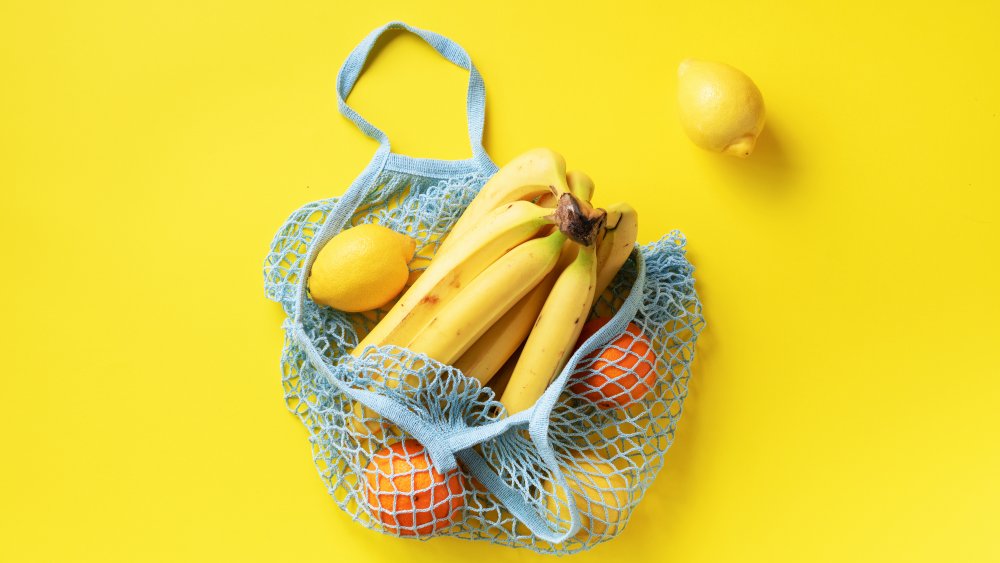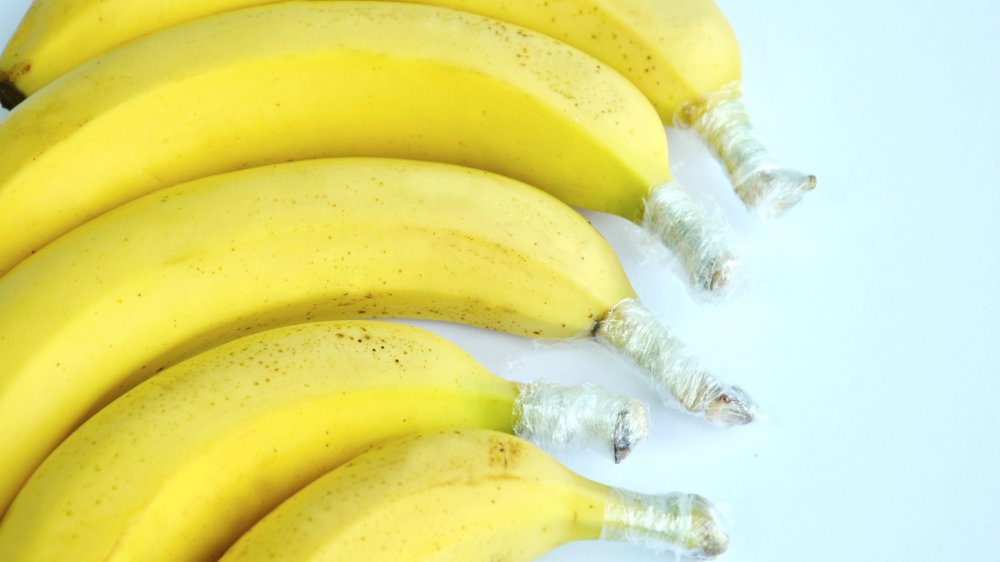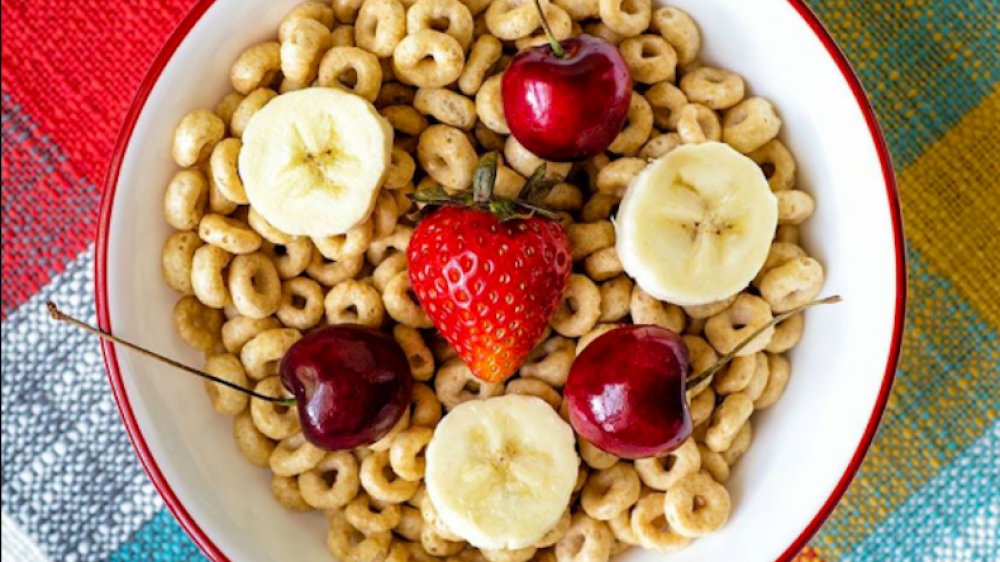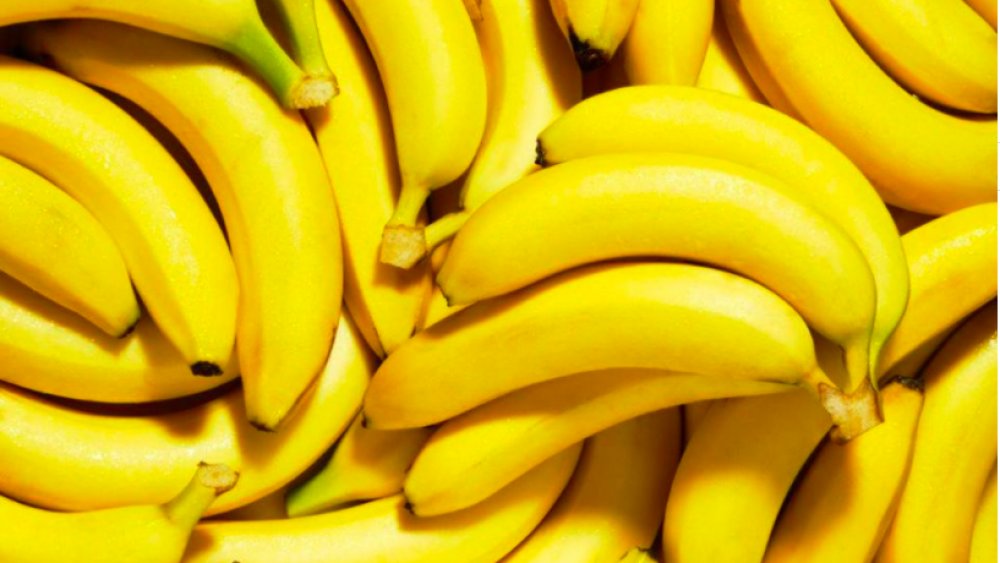The Trick To Keeping Your Bananas Fresh Longer
If you recently came across an incredible produce sale, you might have been tempted to stock up a little more than usual. The problem is that produce doesn't last forever, which means in a week or so you'll be dealing with too-ripe fruit, spoiled food, and some wasted cash. Thankfully, there are options to prolong the life of your fresh fruits and veggies.
Many fruits and vegetables can be stored in the refrigerator to help extend the shelf life. Produce like apples, melons, berries, citrus, and stone fruit keep very well in the refrigerator. Other items, like avocados, should ripen on the countertop first to best prepare and preserve them (via American Heart Association). Remember to keep leafy greens stored in ice water or standing up in a vase of water, like fresh-cut flowers, for the longest shelf life (via The Kitchn).
There are also plenty of tips available for storing produce that you didn't completely use. For example, unused avocado can be submerged in water and placed in the refrigerator, and the exposed flesh will not brown (via Avocadoes From Mexico). Finally, special storage containers, like Food52's stow away bowls, or DIY containers using what you have at home can keep things like potatoes, mushrooms, garlic, tomatoes, and onions good for longer since they require dark, cool spaces.
Bananas are another popular fruit, and if you're not into banana bread, you'll want to keep them fresh and ready to eat for a longer period of time. But how?
How to keep your bananas fresh longer
While keeping most fruits and vegetables fresh longer is simply a matter of knowing where to store the produce and away from select fruits or vegetables to prevent further ripening — or even rotting — some items call for a bit more attention. As bananas ripen, they produce ethylene gas, primarily in the stem, which then spreads to the rest of the fruit to help it ripen (via Business Insider). Understanding this allows people to try better techniques for storing bananas to keep them fresh for a longer period of time.
One method for storing bananas is the popular plastic wrap technique. Some wrap the stems of a bunch of bananas with plastic wrap to slow ripening (via Food52). It is, however, more effective to wrap the stems of individual bananas to prevent or stop ripening instead of while they're all attached to one another. By wrapping the stems individually, there are fewer places for the ethylene gas to leak out because the stems are more fully covered (via LifeHacker).
According to Food52, it's also possible to simply place bananas in the refrigerator once they are as ripe as you like. This method cuts back on the use and waste of plastic wrap as well as preserving your bananas. Don't forget, you can always peel and freeze bananas if they are becoming too ripe, too.
How to use frozen bananas
If you cannot use all of your bananas before they will go bad, either on the counter with stems wrapped in plastic or in the refrigerator, then consider putting them in the freezer. Frozen bananas keep for up to six months, which considerably extends the shelf life of the fruit (via All Recipes). There are three ways to freeze bananas that are each useful in their own way. Before choosing a method for freezing your extra, ripening bananas, think about how you will most likely use the bananas after they are frozen.
Frozen bananas are commonly (and quite popularly) used for making smoothies and dairy-free ice cream. They can also be used for baking by being mashed after thawing from the freezer. Another way to use frozen bananas is to place them on top of things like cereal, oatmeal, or acai bowls. Don't forget, frozen bananas can also be dipped in chocolate or yogurt and coated with a topping. However, you plan to use frozen bananas will change the best way you should prepare and store them.
Freezing bananas to keep them fresh
One method for freezing bananas is to flash freeze them after preparing the bananas. To do so, peel the bananas and cut them into slices. Next, place the slices on a baking sheet in a single layer. Put the baking sheet in the freezer for a few hours, then once the banana slices are frozen, transfer them into a freezer-safe bag. This will keep the banana slices from freezing together in a clump, and will also prevent your blender from burning out by processing large chunks of frozen bananas (via The Spruce Eats).
Another way to freeze bananas is to simply peel them, put them in a freezer-safe bag, and place them in the freezer. This method is particularly versatile because the bananas can be broken into smaller pieces to put into a blender or a food processor. The whole bananas can also be thawed and then mashed to go into baked goods like muffins or banana bread.
While it is possible to freeze bananas in their peels, it is better to avoid this. Bananas frozen in their peels are safe to eat, but the peels turn dark brown or black and get soft which makes removing the peels very difficult. So make the most of your bananas and freeze them when they are just starting to get brown spots on the peels to maximize the sweetness of the fruit.



